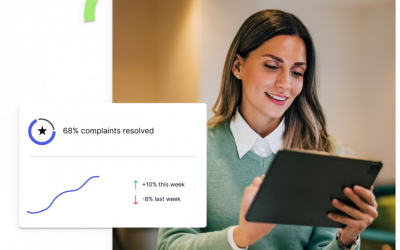Data paralysis, data daze, and analysis paralysis are just a few of the names for the overwhelming feeling that happens when you have too much data to sort through and no clear path to actional information. But data paralysis doesn’t have to hamper your company! With the right Data Analytics Strategy, it is possible to get past the hurdle of how to deal with data that is difficult to find, untrustworthy or simply jumbled together in a way that makes it impossible to utilize.
Using a Data Analytics Strategy to Fight Data Daze
Start With a Goal
Many companies have tons of data but no clear picture of what they want to achieve from the effort to sift through everything in their archives. The best first step in data analysis is defining your goals before digging into the data. You need to know what you’re measuring and why those details matter to your organization. Ask yourself what would have the most positive impact on your business.
Once you’ve outlined those KPIs, determine what data you need. Each KPI will have its own questions that you have to answer with data. These data points tell a story and can help identify what data points you currently collect and what tracking your organization needs to add to help meet your KPIs. Answering these questions will help your team understand progress toward intended changes.
Remember, every analysis won’t include all of your company’s data – an analysis in HR probably doesn’t need operational data from a shop floor. Pinpoint the datasets you need for meaningful insights.
Get Data Ready for Analysis
Accessing your data proving to be a problem? You’re not alone. For many of our clients, systems may not be compatible, data sets can be misplaced or archived unintentionally, or data may have questionable accuracy.
When you consider that a widely accepted human error rate is 4% to 30% without quality control processes, just the entry errors alone can wreak havoc on your data analytics. It’s essential to ensure data is accurate, valid, and the dataset is properly formatted, including legacy data that may still hold keys to success.
Data Visualization
The results of data analytics can be challenging to translate into meaningful reports that communicate a clear message or outline the best next steps. You have to nail down who needs insights from the analysis and the best format for them to understand and act on the information.
Studies have been conducted on learning styles and suggest that 65% of learners in any given group are visual learners. So, two out of three team members likely would prefer to see the results of data analytics rather than read it. You can make data interpretation easier for your team when you provide visual reporting, for example comparing performance with line graphs or showing market share with a pie chart. Additionally, customizing visualization by role can help the different stakeholders immediately see what’s most important for them to do their jobs well.
Make a Strategic Plan for Growth
One analysis and one report will have limited value to your business. You need to create a schedule for analyses based on your goals and how to measure performance over time. Getting that data into the hands of those who need it, with a plan for expectations of what to do with that data once they have it, is paramount.
Part of leadership’s challenge is fostering excellent organizational health through interpreting and acting on trends and insights gleaned from data analytics. In a recent survey, less than 30% of businesses say they’re good at leveraging analytics findings in support of key decision-making. Gut instincts are important, but when flavored with the right data, it puts you on a path to help your teams be more productive and profitable.
Another key aspect of an overall data strategy that is often overlooked is Accountability. Thinking about who needs the data, what data they should get and what we expect them to do with it once received leads to tracking of their data-driven decisions. Tracking this impact within a team, across a department or through the entire enterprise will help you uncover gaps where enablement, additional mentoring/shadowing and overall training can have an impact.
Make a Plan, Take Action
Selecting, cleaning, and interpreting your data can feel like an uphill climb with poor data management, but with a goal in mind and a strategic plan that allows you to focus on what your business needs to grow, you can find a way out of data paralysis.
ZeroedIn is a trusted industry partner that has the support and the solutions to help you develop and execute on the right strategy for your business, from initial steps through data visualization and the tracking of true data-driven business improvement. Ready to get started? Let’s talk. We have the workforce and the resources to support you.




